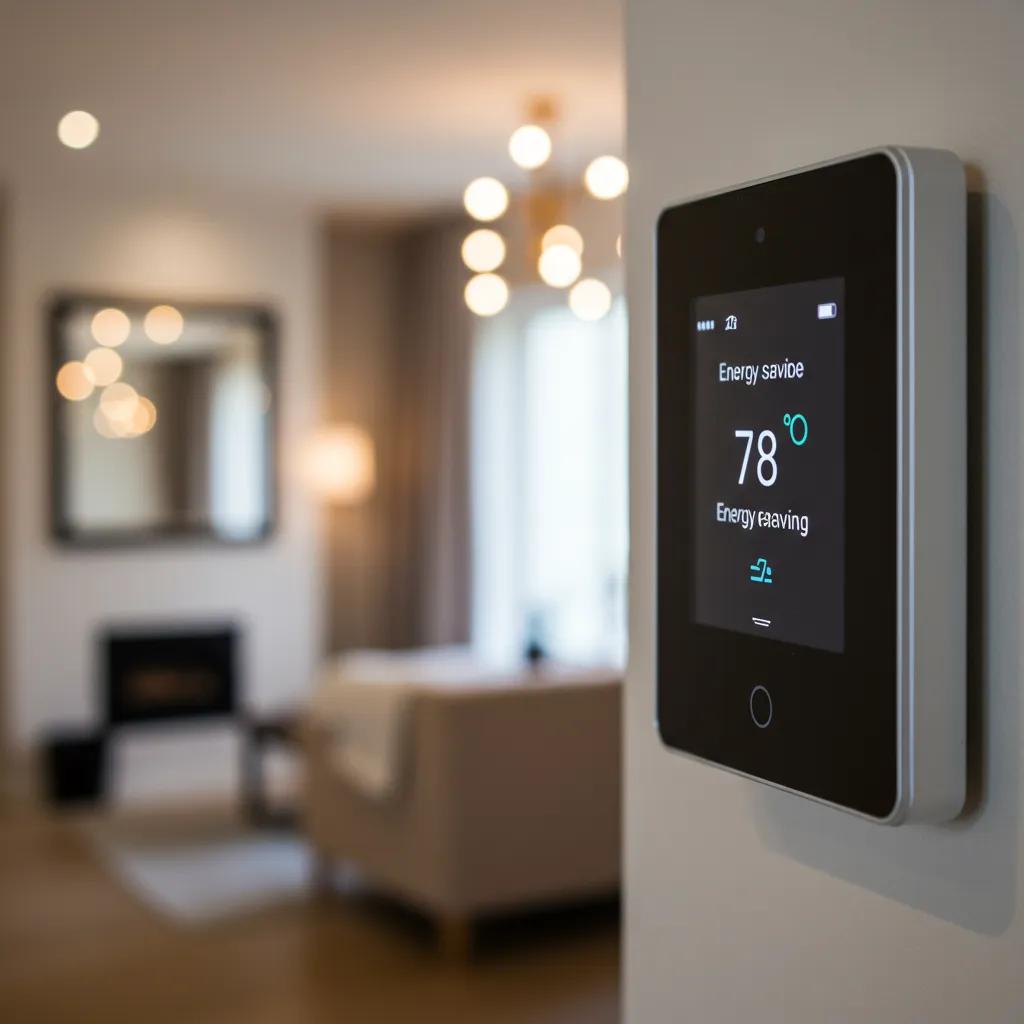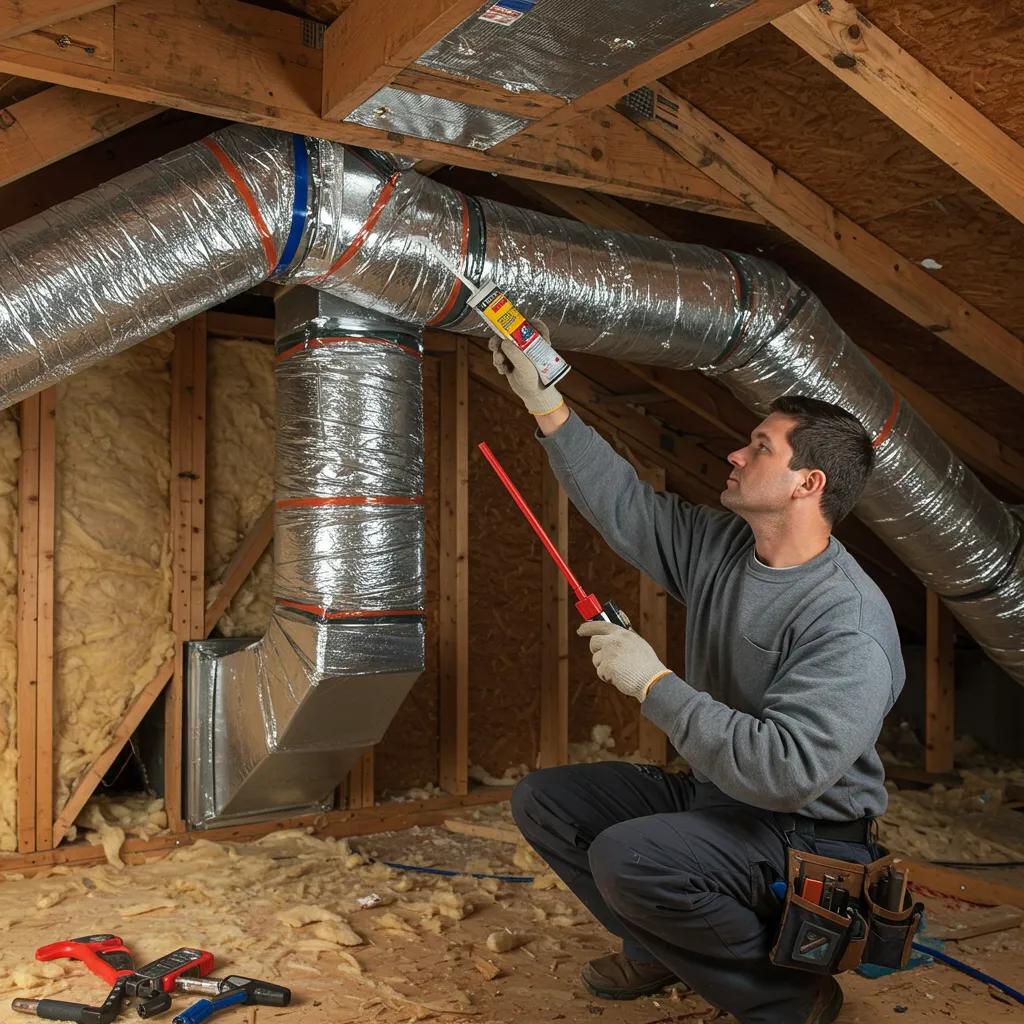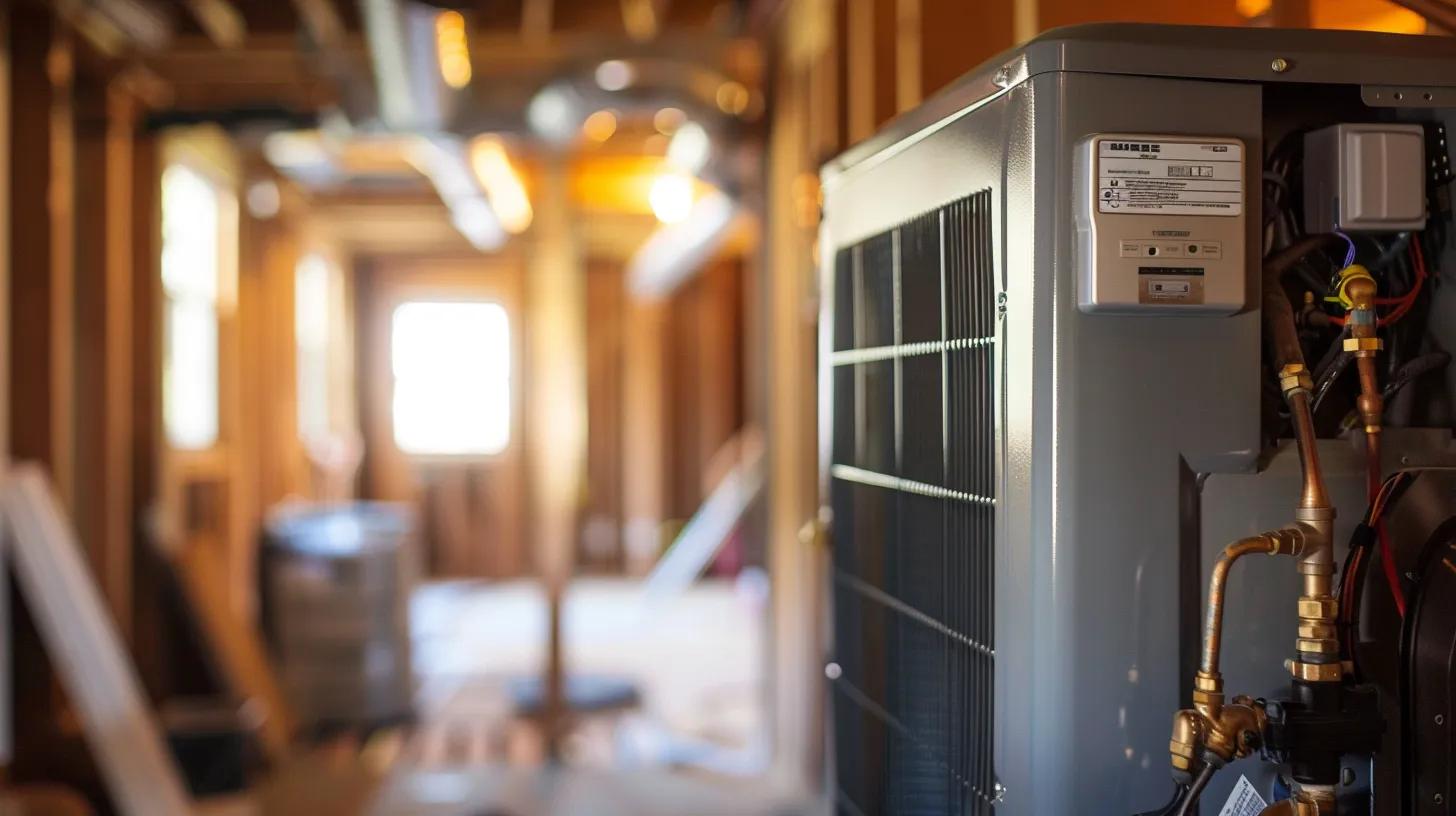Boost Your Furnace's Energy Efficiency: Expert Tips for Edmonton Homes
Edmonton’s chilly winters can send heating bills soaring when your furnace isn’t running efficiently. But with smart upgrades and consistent care, you can see real savings and enjoy lasting comfort. This guide will walk you through how regular maintenance, upgrading to a smart thermostat, sealing your ducts, exploring new furnace options, improving home insulation, and taking advantage of available incentives all work together to cut your furnace costs and boost its performance. We’ll start with the crucial role of preventative service, then dive into cutting-edge controls, airtight ductwork, and high-efficiency units. Finally, you’ll discover how strategic insulation improvements and financial programs can further lighten your energy load. By following these expert furnace energy efficiency tips, Edmonton homeowners can achieve more consistent warmth, use less energy, and gain peace of mind by partnering with local specialists who truly understand Alberta’s climate.
How Does Regular Furnace Maintenance Boost Energy Efficiency?
Annual furnace maintenance ensures every part of your system operates at its best, which means less fuel used and a longer lifespan for your equipment. When a skilled technician inspects and tunes up your heat exchangers, burners, and airflow systems, they eliminate friction, soot buildup, and calibration issues. This allows your furnace to deliver consistent heat while consuming less energy. This targeted service also catches small problems—like loose belts or pilot lights that won’t stay lit—that, if ignored, force your furnace to work harder and drive up your utility bills.
Professional furnace tune-ups typically involve cleaning heat exchangers, lubricating moving parts, and checking safety controls. Each of these steps prevents energy waste and potential breakdowns. Homeowners often notice immediate improvements: more even heat distribution, fewer cold spots, and a quieter system. A bonus of this routine care is that it keeps your warranty valid, protecting your investment and delaying the need for a premature replacement. Investing in one annual service can lead to an average 30 percent reduction in energy usage, translating into significant savings and a more dependable furnace throughout its entire operational life.
What Are the Key Benefits of Annual Furnace Tune-Ups?
Before we detail how annual tune-ups enhance efficiency, here’s a quick rundown of the benefits and how they work:
- Improved Combustion Efficiency – Cleaning burners and fine-tuning gas flow ensures fuel burns more completely, generating more heat from each unit of gas.
- Reduced Airflow Resistance – Swapping out filters and clearing blowers reduces strain on the motor, lowering electricity consumption.
- Enhanced Safety Compliance – Verifying safety switches and inspecting heat exchangers prevents dangerous carbon monoxide leaks and system shutdowns.
- Extended Component Lifespan – Lubricating motors and checking belts minimizes wear and tear, delaying costly repairs or early replacement.
- Optimized System Balance – Adjusting duct airflow promotes even heat distribution, preventing energy waste in overly hot or cold areas.
Each of these benefits directly contributes to lower furnace costs and underscores why routine maintenance is the cornerstone of any energy-efficiency strategy. Now, let’s look at how often you should replace your filter.
How Often Should You Replace Your Furnace Filter for Maximum Savings?
You should replace your furnace filters every one to three months, depending on how much you use your system, the type of filter you have, and your home’s air quality needs. A dirty, clogged filter forces your furnace blower to work harder, which can increase electricity use by up to 15 percent. High-efficiency pleated filters might last three months in moderate conditions, but basic fiberglass filters need changing every month. Homes with pets, smokers, or family members with allergies will benefit from more frequent filter changes to maintain optimal airflow and indoor air quality.
Simply swapping out your filter is a high-impact DIY task that provides immediate improvements in airflow and reduces strain on your motor. Keeping up with a regular replacement schedule prevents dust from building up on your heat exchangers, which hinders heat transfer and makes your furnace run longer. By setting monthly calendar reminders or using alerts from a smart thermostat, homeowners can ensure consistent filter care as part of their overall furnace energy efficiency plan.
What DIY Furnace Maintenance Checks Can Improve Efficiency?
A few basic checks you can do yourself can complement professional service and boost your furnace’s efficiency between annual tune-ups:
- Inspect and clean filter slots and the surrounding areas to prevent air leaks around the filter.
- Check your thermostat’s batteries and ensure it’s calibrated to the nearest degree for accurate temperature control.
- Listen for any unusual sounds like rattles or squeals, which could indicate loose or worn parts.
- Make sure your vents and registers are clear of furniture or drapes to allow for balanced airflow.
Why Choose Professional Furnace Maintenance Services in Edmonton?
Edmonton’s demanding climate requires furnace service providers who understand regional heating needs, local building codes, and Alberta’s energy-efficiency programs. Mobil Heating & Air Conditioning Inc. brings local expertise to every inspection, tailoring maintenance strategies to typical Edmonton home constructions and common seasonal challenges. Our specialized service includes targeted filter upgrades, heat exchanger inspections, and blower optimizations that address the specific wear patterns common in this region. Partnering with a trusted local provider gives you confidence in your system’s reliability and ensures compliance with manufacturer warranties, unlocking your furnace’s full energy-efficiency potential.
How Can Smart Thermostats Save Energy and Reduce Heating Costs?

Smart thermostats help lower heating costs by learning your household’s routines, automatically adjusting temperatures when you’re away, and allowing remote control. This reduces wasted heating hours and ensures your home is comfortable only when you need it to be. These devices connect with your furnace to adjust settings based on outdoor temperature data, weather forecasts, and your actual usage patterns. By avoiding unnecessary heating when you’re out and only warming up your home when needed, a smart thermostat can cut energy use by up to 20 percent compared to manual controls.
Connecting to your Wi-Fi network and using smartphone apps gives you the power to change schedules or temperatures from anywhere. This prevents energy waste if your plans change unexpectedly. Advanced features like learning algorithms analyze your daily routines and optimize heating cycles, further reducing your furnace’s runtime without sacrificing comfort. Installing a smart thermostat transforms your heating system into an adaptive, data-driven climate control network that consistently promotes energy efficiency.
What Features Should You Look for in a Smart Thermostat?
Before you choose a model, consider these key features that will maximize your energy savings and user convenience:
- Learning Capability – Automatically creates schedules by observing your occupancy patterns.
- Geofencing Support – Adjusts temperatures based on your proximity to home, detected by your smartphone.
- Multi-Zone Control – Works with dampers or multiple thermostats to manage heating in specific areas.
- Energy Reports – Provides visual data on your energy consumption trends and offers helpful suggestions.
- Compatibility – Ensures it works seamlessly with your current HVAC brand and wiring setup.
Can Smart Thermostats Integrate with Other Home HVAC Controls?
Yes, many smart thermostats can integrate with zoning systems, humidifiers, dehumidifiers, and air quality sensors to create a unified home climate network. Through open protocols like Zigbee, Z-Wave, or proprietary systems, a smart thermostat can coordinate duct dampers, ventilation fans, and indoor air quality devices. This comprehensive integration prevents different parts of your HVAC system from working against each other—like an air exchanger cancelling out furnace heat—and maximizes overall system efficiency by synchronizing all environmental controls under one intelligent platform.
Why Is Duct Sealing Essential for Furnace Energy Efficiency?

Duct sealing prevents heat loss by closing up gaps and leaks in your ductwork system. This ensures that the warm air your furnace produces actually reaches your living spaces instead of escaping into attics or wall cavities. Leaky ducts can lose 25–40 percent of heated air, forcing your furnace to run longer and consume more energy to compensate. By applying specialized sealants to joints, seams, and connections, professional duct sealing reduces thermal losses and improves airflow balance, directly boosting your furnace’s energy efficiency.
How Does Duct Sealing Prevent Heat Loss and Improve Airflow?
Leak-free ducts maintain the designed static pressure and preserve heat as air travels from your furnace to the vents. When leaks are present, warm air escapes into unconditioned areas, prompting the furnace to run for longer periods to make up the difference. Sealing these leaks with non-toxic polymers or metal tape restores proper airflow volumes, reduces the workload on your blower motor, and prevents heat loss. The result is faster warm-up times, longer furnace cycles at optimal efficiency points, and more consistent comfort throughout your home.
What Are the Advantages of Upgrading to a High-Efficiency Furnace?
A high-efficiency furnace, rated between 90 and 98.5 percent AFUE (Annual Fuel Utilization Efficiency), converts almost all fuel into usable heat, drastically reducing wasted energy compared to older models rated at 56–70 percent AFUE. These advanced units feature modulating gas valves, variable-speed blowers, and two-stage burners that adjust their output to match your home’s actual heating needs. The result is more precise temperature control, quieter operation, and significantly lower fuel consumption over the furnace’s lifespan.
In addition to immediate energy savings, high-efficiency furnaces produce fewer greenhouse gas emissions and often qualify for local utility rebates or provincial incentives. Although the initial cost is higher, the long-term reduction in heating expenses and extended equipment lifespan offer a strong return on investment for Edmonton homeowners.
How Do AFUE Ratings Affect Furnace Energy Efficiency?
AFUE ratings indicate the percentage of fuel your furnace converts into heat over a typical year. A 98 percent AFUE furnace wastes only 2 percent of its fuel energy, while a 70 percent AFUE unit loses 30 percent as exhaust or standby heat. A higher AFUE rating means lower operating costs and a quicker payback period through reduced fuel consumption. When choosing a replacement, comparing AFUE ratings directly helps you estimate your expected annual savings, making it a critical factor in any energy-efficiency decision.
What Are the Long-Term Cost Savings of High-Efficiency Furnaces?
Over a 15-year lifespan, a high-efficiency furnace can save you thousands of dollars on natural gas bills compared to a standard model. For instance, a household using 1,200 GJ of gas annually could save up to 360 GJ—worth hundreds of dollars—by upgrading from a 70 percent to a 95 percent AFUE furnace. These savings accumulate season after season, offsetting the initial price difference and providing net cost reductions each year.
How Can Home Insulation and Heating System Optimization Reduce Furnace Workload?
Effective home insulation reduces your furnace’s workload by minimizing heat loss through walls, ceilings, and floors due to conduction and convection. A well-insulated attic, walls, and basement will retain indoor temperatures for longer, meaning your furnace won’t need to turn on as often. Upgrading to insulation with a higher R-value, sealing air leaks around windows and doors, and adding weather-stripping all contribute to a tighter building envelope. When your home retains heat efficiently, your furnace cycles less frequently, extending its service intervals and lowering energy consumption.
Beyond insulation, integrating indoor air quality (IAQ) solutions—like energy-recovery ventilators—ensures fresh air circulation without sacrificing thermal performance. Fine-tuned airflow distribution through balanced dampers and zoning further optimizes heat delivery, preventing overworked blowers and uneven temperatures. These combined strategies lighten your furnace’s load and enhance the overall longevity of your system.
What Role Does Home Insulation Play in Furnace Energy Efficiency?
Insulation acts as a barrier against heat transfer, reducing the temperature differences that trigger your furnace to activate. Upgrading attic insulation to R-60, wall cavities to R-20, and basement ceilings to R-30 can decrease heat loss by up to 50 percent compared to minimal insulation levels. Proper installation of vapor barriers and air sealing complements these upgrades by preventing moisture-related inefficiencies and drafts, allowing your furnace to maintain setpoint temperatures with less runtime.
How Does Improving Indoor Air Quality Support Furnace Performance?
Cleaner air reduces dust buildup on heat exchangers and filters, preserving thermal conductivity and airflow rates. IAQ devices such as whole-home filters and ultraviolet germicidal lamps prevent microbial growth and particulate buildup within your ductwork. When your furnace circulates cleaner air, blower motors encounter less resistance, reducing electrical draw and wear. Improved IAQ also benefits occupant health, offering a dual advantage of energy savings and a healthier living environment.
What Are Simple Steps to Optimize Your Heating System’s Efficiency?
- Seal any openings in your attic and walls around plumbing and wiring to eliminate drafts.
- Upgrade to ENERGY STAR–rated windows or add cellular shades to help trap heat.
- Balance supply and return vents using adjustable dampers for even airflow distribution.
- Install an energy-recovery ventilator to exchange stale air without losing heat.
- Have your furnace commissioned with a combustion analysis to ensure it’s properly tuned.
What Financial Incentives and Support Are Available for Energy-Efficient Furnace Upgrades?
Homeowners in Alberta can access government rebates and utility programs that help offset the cost of installing high-efficiency furnaces and related upgrades. The Canada Greener Homes Grant offers up to CAD 5,000 for eligible retrofits, including furnace replacements, with potential provincial top-ups available through local incentives. Natural Resources Canada provides up-to-date information on grant amounts and eligibility criteria, making it easier for residents to recoup a portion of their investment in lower energy consumption.
In addition to direct rebates, many HVAC companies offer financing solutions that spread installation costs over time. Low-interest loan programs and deferred payment plans allow homeowners to implement efficiency measures immediately while paying back gradually. When combined with annual savings on heating bills, these financing options can make upgrades cash-flow positive from the first year, accelerating your return on investment.
Which Government Rebates and Incentives Apply in Edmonton and Alberta?
Eligible Edmonton homeowners can apply for the Canada Greener Homes Grant, which covers up to 25 percent of retrofit costs, including up to CAD 5,000 for an energy-efficient furnace. Local utilities may offer additional rebates for services like duct sealing or thermostat upgrades. By checking the current program details through Alberta’s provincial energy efficiency office or Natural Resources Canada, homeowners can maximize available support and reduce their out-of-pocket expenses.
What Financing Options Exist for New Energy-Efficient HVAC Systems?
Many HVAC service providers partner with finance companies to offer customized payment plans with low interest rates or no payments for an initial period. These arrangements allow homeowners to proceed with installations right away and repay the cost over two to ten years, aligning payments with their seasonal energy savings. Such financing not only spreads the budget impact but also ensures projects move forward without delay, optimizing furnace energy efficiency without immediate financial strain.
Conclusion
Boosting your furnace’s energy efficiency not only leads to significant cost savings but also enhances your home’s comfort and safety. By implementing regular maintenance, upgrading to smart technology, and sealing ducts, you can ensure your heating system operates at peak performance. These strategies not only reduce energy consumption but also extend the lifespan of your equipment, making them a wise investment for any Edmonton homeowner. Discover more about optimizing your heating system by exploring our expert resources today.

